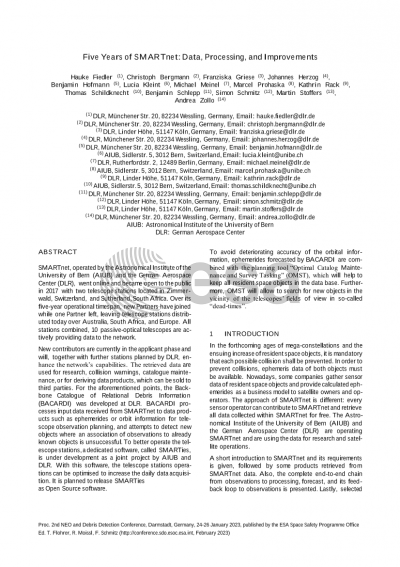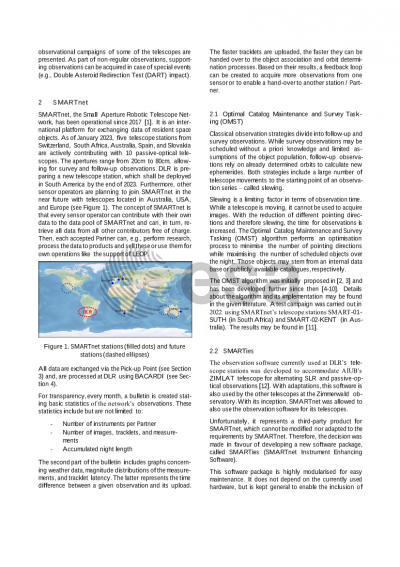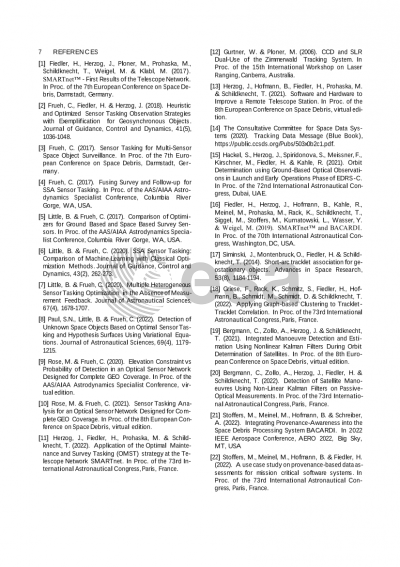Document details

Abstract
SMARTnet, operated by the Astronomical Institute of the University of Bern (AIUB) and the German Aerospace Center (DLR), went online and open to the public in 2017 with two telescope stations located in Zimmerwald, Switzerland, and Sutherland, South Africa. Over its five-year operational timespan, new partners have joined while one partner left, leaving telescope stations distributed today in Australia, South Africa, and Europe. All stations combined, 9 telescopes are actively providing data to the network.
New contributors are currently in the applicant phase and will, together with further stations planned by DLR, enhance the network’s capabilities. The retrieved data is used for research, collision warnings, catalogue maintenance or for deriving data products, which can be sold to third parties. For the aforementioned points, the Backbone Catalogue of Relational Debris Information (BACARDI) was developed at DLR. BACARDI processes input data received from SMARTnet to data products such as ephemerides and orbit information for telescope observation planning, and attempts to detect new objects where an association of observations to already known objects is unsuccessful.
To better operate the telescope stations, a dedicated software, called SMARTies, is under development in a joint project by AIUB and DLR. With this software, the telescope stations operations can be optimized to increase the daily data acquisition. It is planned to release SMARTies as Open Source software.
To avoid deteriorating accuracy of the orbital information, ephemerides forecasted by BACARDI are combined with the planning tool “Optimal Catalog Maintenance and Survey Tasking” (OMST), which will help keeping all resident space objects in the data base. Furthermore, OMST will allow to search for new objects in the vicinity of the telescopes’ field of view in so-called “dead-times”.
A short introduction to SMARTnet and its requirements is given, followed by some products retrieved from SMARTnet data. Also, the complete end-to-end chain from observations to processing, forecast, and its feed-back loop to observations is presented. Lastly, selected campaigns of some of the telescopes are presented. As part of non-regular observations, supporting observations can be acquired in case of special events (e.g. DART).
Preview






